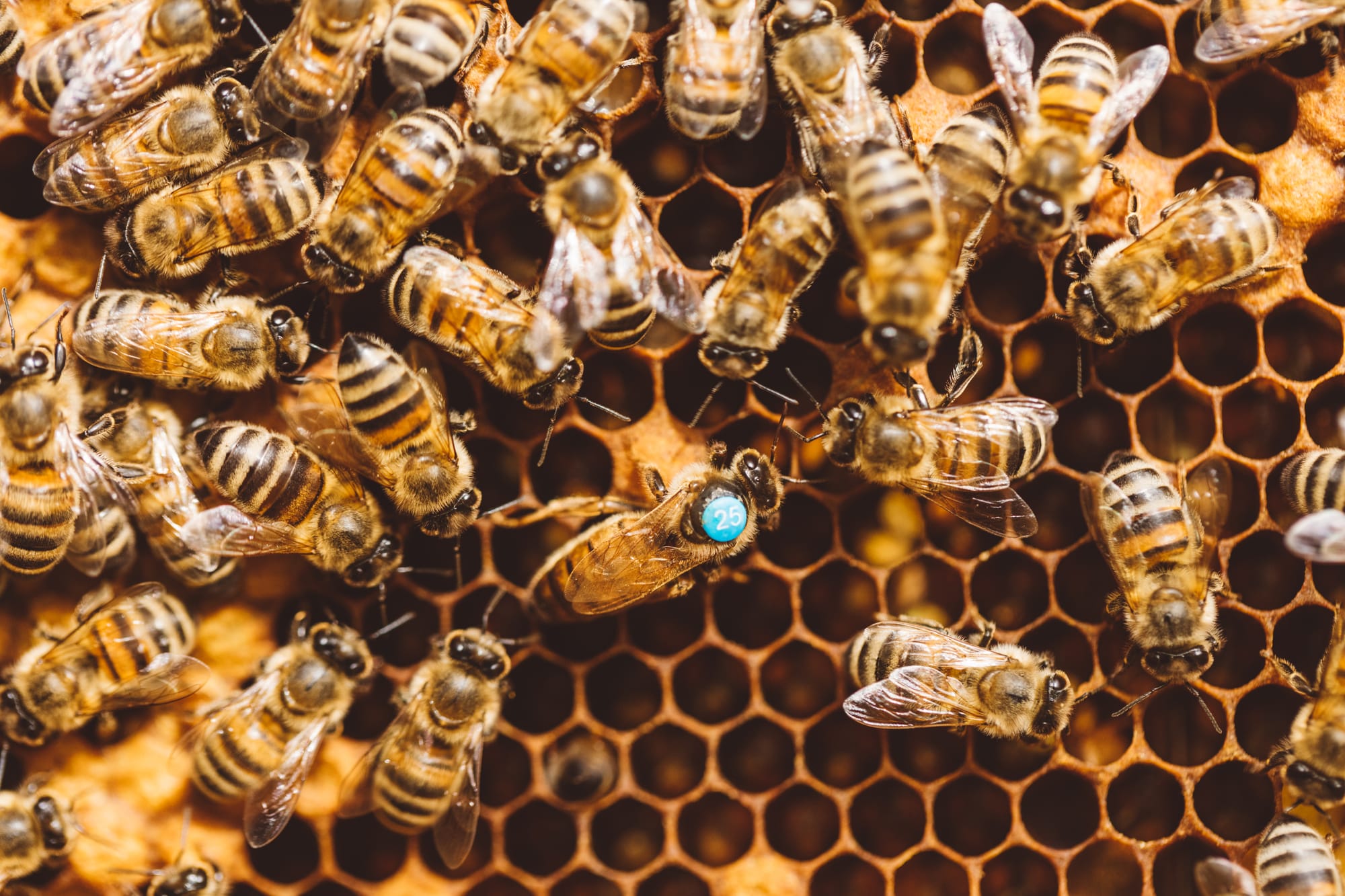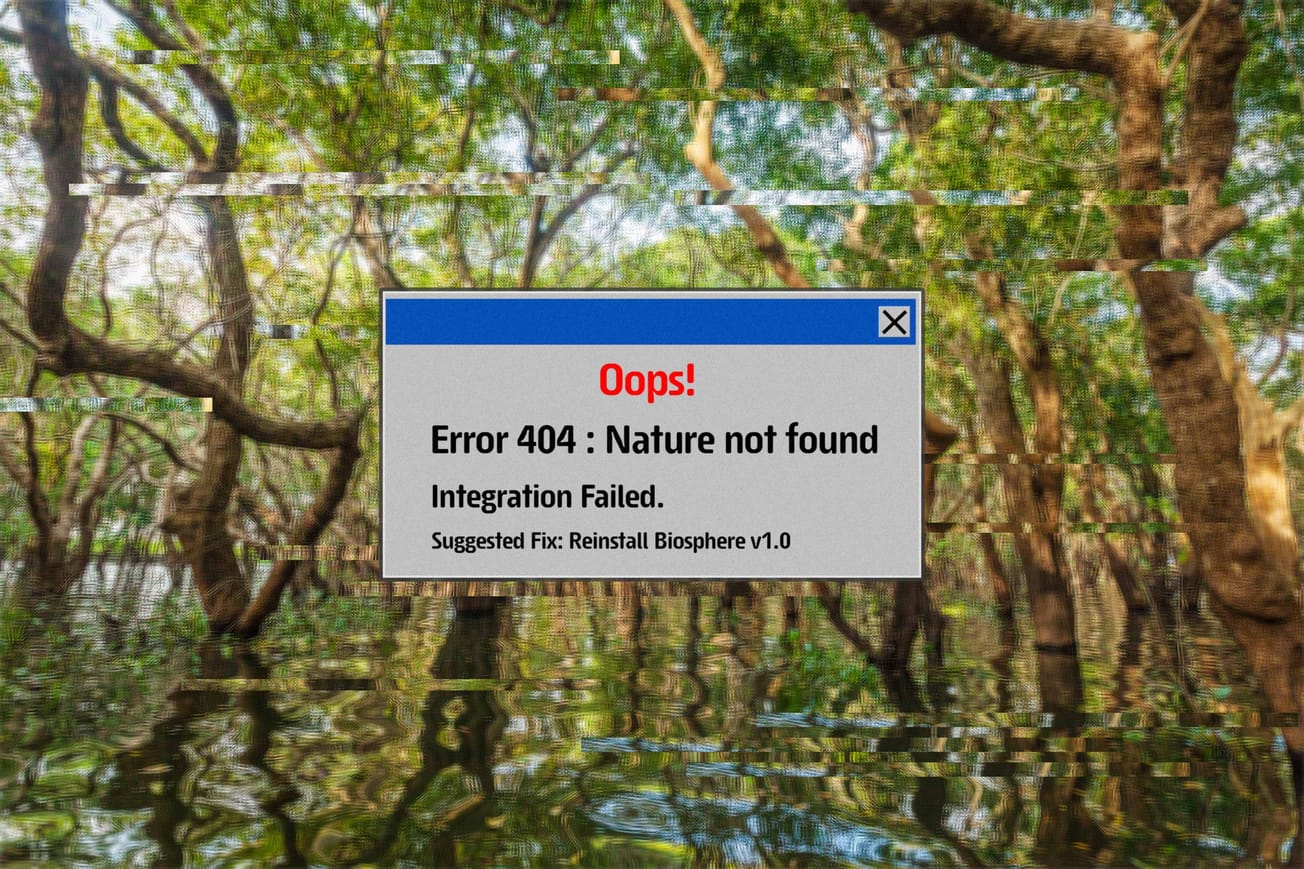AI can be transformative for climate solutions, but only if its own environmental footprint is aggressively managed through efficiency improvements, renewable energy procurement, and transparent reporting.
Additionally, like other industries and applications, there are ethical questions around cognitive sovereignty and AI's social impacts that cause concern for human wellbeing. Yet there's a powerful, under-explored lens that has the potential to both reduce AI's environmental impacts and address its social risks: biomimicry. By placing nature at the heart of AI innovation, we can chart a more ethical and sustainable path forward.
Beyond the Silos: A Nature-Centered Approach
We often discuss AI and sustainability in separate conversations—one focused on climate and planet, the other on humans and justice. Biomimicry bridges both dimensions, offering a unified framework for creating AI systems that are regenerative by design rather than extractive by default.
The Dual Challenge: People and Planet
AI's impact operates across two critical dimensions:
Planet: AI systems carry an enormous environmental burden—vast energy consumption, water and material demands, hardware waste, and carbon emissions from data centers that are projected to consume 1,050 terawatt-hours by 2026.
People: AI creates social consequences through algorithmic bias, discrimination, privacy erosion, misinformation, and threats to cognitive sovereignty—the right to control our own thinking and decision-making—all of which become elevated risks when we deploy systems faster than we can understand them.
Together, these create both massive opportunity and serious risk. That's exactly where biomimicry enters the conversation.
What Is Biomimicry—and Why It Matters to AI?
Biomimicry is the practice of learning from nature's 3.8 billion years of evolutionary experimentation—adopting its strategies, patterns, and systems to create solutions that are sustainable, regenerative, and life-friendly.
Critically, this doesn't mean asking what we can extract from nature, but what we can learn from her—applying insights in ways that create conditions conducive to life.
When AI scales unchecked, both its environmental footprint and social risks expand. Biomimicry offers an alternative paradigm, one that emphasizes adaptation, collaboration, efficiency, and alignment with living systems.
The Framework: Nature as Model, Measure, Mentor
Biomimicry operates through three complementary dimensions: Nature as…
- Model: Derive inspiration from nature's proven designs.
- Measure: Evaluate quantitatively against ecological criteria and qualitatively against Life's Principles.
- Mentor: Continuously learn and iterate, letting nature guide the process.
This framework translates biomimicry from abstract concept into actionable design, innovation, and measurable sustainability strategies—particularly valuable for AI development.

What Ants, Birds, and Bees Can Teach AI
Resource-Efficient Architectures
Nature's systems are masters of minimal waste and maximal output. Consider swarm intelligence: ant colonies, bird flocks, and bee hives demonstrate how many small, energy-efficient agents—each following simple rules and sharing local information—can outperform a single large, rigid system.
Applied to AI, this means transitioning from massive centralized computing to distributed, lower-power nodes, reducing reliance on land and power-hungry data centers. This approach embodies nature's principle of distributed efficiency and being resource efficient—many small, adaptive systems outperforming one large, inflexible one.

Ethical Governance Through Symbiotic Relationships
Swarm systems aren't only energy-efficient—they're ethically instructive. In natural swarms, decision-making is decentralized and cooperative. No single bee or ant controls the colony; instead, consensus emerges through feedback and diversity of input.
Translating this to AI suggests governance models that distribute responsibility, avoid centralized power, and reduce bias through collaborative decision-making. This decentralized approach also helps protect cognitive sovereignty—ensuring that AI augments rather than supplants human judgment and agency. Biomimicry suggests that engineered systems should coexist harmoniously with living systems—not exploit them.
The physical infrastructure supporting AI should likewise move beyond extractive, human-centric design. Currently, hyperscale data centers require 200 to 1,000 acres of land each to house the servers necessary for AI operations—development that often comes at the expense of local communities and ecosystems. By embedding nature's principles into both AI algorithms and infrastructure planning, we can design for ecological context, equity, and regenerative impact.
This isn’t just a nice-to-have vision; it is already being done. Microsoft is integrating the quantification of ecosystem services as a performance measures for the places it operates. By understanding and emulating the performance of local ecosystems, they can help to define what “good” and nature-positive performance means for that place, by being locally attuned and responsive to the needs of both the community and the ecosystem. At a time when datacenter development is increasingly being challenged by communities, a biomimetic approach might be exactly what companies and communities need to find alignment.
"When any building is constructed, there is an ecological cost, so we’re working to mitigate those things,” says Kaitlin Chuzi, Director of Biomimicry & Advanced Ecosystems at Microsoft. “What matters is that we holistically and systemically design the site with the local ecosystem in mind.” Source: Microsoft
Earth-Aligned Principles: AI Within Planetary Boundaries
This brings us to Earth-Aligned Principles—an emerging framework premised on a critical realization: current policy discussions are missing the urgent need to align AI systems with Earth system stability and planetary boundaries. See the recent article in Nature.
Truly beneficial AI must not only serve immediate human goals but also safeguard the long-term health and resilience of the global environment on which all life depends. This school of thought calls for AI systems to be developed and deployed in ways that serve the shared stability of the planet.
One pathway forward involves ethically training AI with Indigenous wisdom, shifting from an extractive logic to one that is relationship-based and considers both social and ecological outcomes. Indigenous knowledge systems have maintained symbiotic relationships with ecosystems for millennia—insights that could fundamentally reshape how AI understands and interacts with the world.
Core Questions We Should All Ask
Now is the critical time to shift from asking "Can AI do this?" to "Should it?"—moving toward designs that align with ecological systems and serve broader life, rather than dominate it.
By asking "What would Nature do?" we remind ourselves that humans are part of Nature—not separate—and thus subject to the same limits and boundaries as the rest of the living world. When we operate by principles of alignment and symbiosis with the planet, we create conditions in which both people and ecosystems can thrive.
The Path Forward
The choice before us is clear: we can continue scaling AI through brute force—bigger models, more data, vastly more energy—or we can follow Nature's lead. We can design with the filter that biomimicry invites: creating conditions conducive to life.
What if the future of AI isn't about conquering complexity with computational power, but about learning humility from systems that have already solved the problems we face? What if the smartest algorithm is the one that knows when to distribute rather than dominate, to collaborate rather than control?
Nature has been innovating sustainably for billions of years. Perhaps it's time we started taking notes.
The authors advocate for integrating biomimicry principles into AI development to create technologies and narratives that regenerate rather than extract, collaborate rather than dominate, and ultimately align with the living systems on which all life depends.
Nicole Miller is CEO of Biomimicry 3.8, a certified B Corp helping change-makers create a regenerative and just world by emulating nature's designs and principles. With over 22 years in corporate sustainability, she has guided leaders at Fortune 100 companies such as Microsoft, Ford, and Interface to apply nature's strategies for business success and regenerative outcomes for people and the planet. Raised in Montana through five generations of family land stewardship, Nicole brings curiosity, resilience, and interconnected thinking she learned from nature to her professional work
Lara Birkes is a climate, nature and policy professional with over fifteen years’ experience managing partnerships, initiatives and policy engagement with companies, international organizations, governments, and NGOs. In her free time, Lara volunteers with several nonprofit organizations working on wildlife protection, conservation, renewable energy, and climate change in the rural mountain west. As an outdoor enthusiast, away from work you can usually find Lara in the mountains with her dog.
















